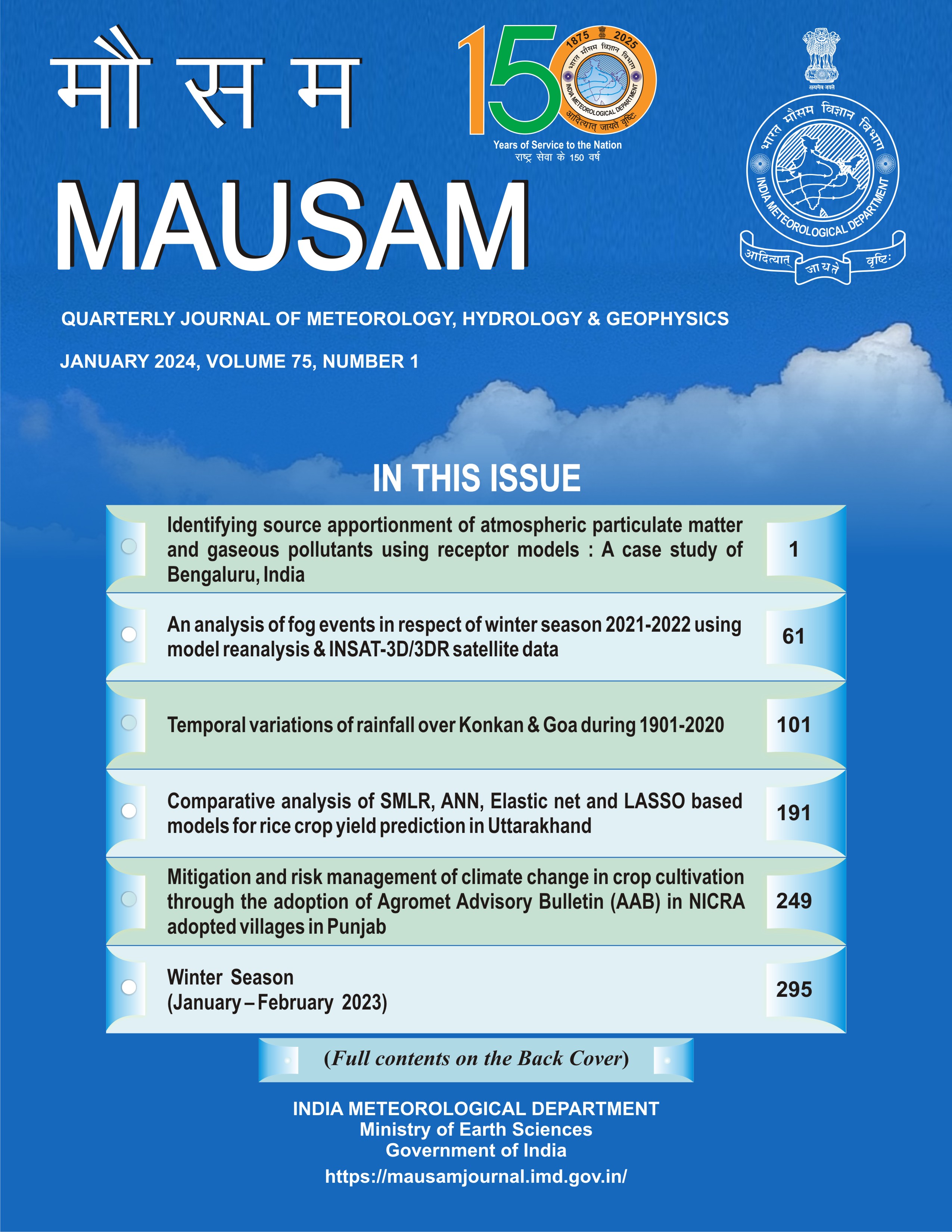Seasonal characterization of aerosols over high altitude location of southern India, Ooty, Tamilnadu
DOI:
https://doi.org/10.54302/mausam.v75i1.5960Keywords:
AOD, Black Carbon, Source apportionment, MODIS, Meteorological parametersAbstract
Climate change has been worsened by aerosols which got a significant place in the scientific research to understand climate change dynamics. Hence, the optical properties of the aerosols play an important role in the earth’s energy radiation budget. The Aerosol Optical Depth was measured at high altitude region in Ooty from December 2020 to May 2021. The spectral, monthly and diurnal variation of AOD were assessed and showed their seasonal variability. The mean AOD value at 500 nm was higher during the Summer season (0.625±0.323) than in the Winter season (0.213±0.006). The Black Carbon (BC) was measured using an Aethalo meter from December 2020 to September 2021. The average season wise concentrations of BC were 0.680±0.206µg m-3, 1.128±0.393 µg m-3 and 0.189±0.06 µg m-3 for the Winter, Summer and Monsoon seasons, respectively. The sources of BC mass concentration were apportioned based on fossil fuel (BCff) and biomass burning (BCbb). The fossil fuel based contribution was higher than the biomass based contribution to the total BC concentration. The comparative study of BC concentration with the AOD, it was projected that the AOD had increased in line with surging BC concentration up to April, 2021. The ground-based daily AOD measurements were compared with the MODIS retrieved AOD. The MODIS retrieved AOD was positively correlated with the ground measured AOD during the Winter and Summer seasons. The HYSPLIT trajectory presented the pathways of the source from the long range regions. The Winter season trajectory was attributed to the North-easterly and easterly winds and the Summer season was attributed to the North-westerly and westerly winds that exhibited the long-range transport of aerosols from the neighbouring cities. The meteorological parameters significantly affected the loading of aerosols during all the seasons, denoting that they were supposed to the local prevailing meteorological conditions.
Downloads
Published
How to Cite
Issue
Section
License
Copyright (c) 2023 MAUSAM

This work is licensed under a Creative Commons Attribution-NonCommercial 4.0 International License.
All articles published by MAUSAM are licensed under the Creative Commons Attribution 4.0 International License. This permits anyone.
Anyone is free:
- To Share - to copy, distribute and transmit the work
- To Remix - to adapt the work.
Under the following conditions:
- Share - copy and redistribute the material in any medium or format
- Adapt - remix, transform, and build upon the material for any purpose, even
commercially.



